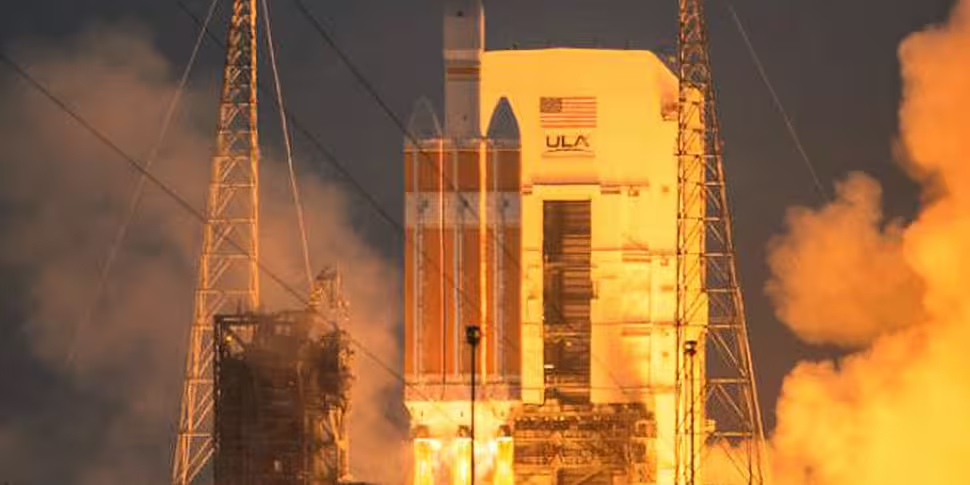A spaceship, which is designed to one day fly astronauts to Mars, has completed a flawless, unmanned test flight around the Earth.
NASA's Orion craft launched earlier in Florida, and has achieved the record of flying further and faster than any capsule since the Apollo moon programme.
It ended up coming down in one piece in the Pacific Ocean - much to the delight of mission control.
The unmanned four-hour flight is testing crucial systems, like the heat shield and parachute splashdown, on a spacecraft which could put humans back on the Moon in the early 2020s, followed by Mars in the 2030s.
According to mission control, Orion successfully reached its peak altitude of 3,604 statute miles - that's the furthest any spaceship has been away from Earth since the Apollo 17 mission in 1972.
Astronauts at the International Space Station have been watching a video of the test flight, which is 15 times higher than the station's orbit. The maiden voyage has been described as "very stable" and "flawless" so far.
Congrats #Orion! We're one step closer to bootprints next to these rover tracks. #JourneyToMars pic.twitter.com/1l51sQwpMh
— Curiosity Rover (@MarsCuriosity) December 5, 2014
The spacecraft, which blasted off aboard a United Launch Alliance Delta IV Heavy rocket at 12.05pm UK time, is expected to splashdown in the Pacific Ocean near San Diego just before 4.30pm. It will be retrieved by the US Navy.
An unmanned, aerial aircraft - equipped with infrared and other cameras - looks set to record Orion's triumphant return after it successfully orbits the earth twice, and will capture the moment when the spacecraft opens its parachutes.
More than 1,200 sensors have been installed throughout Orion - with 15 miles of wiring - to determine if a crew could survive the temperatures inside the cabin.
As the spacecraft re-enters Earth's atmosphere, hurtling at a velocity of 20,000mph, it will experience more than eight times the force of gravity, and its heat shield will withstand temperatures of 2,200C (4,000F).
At the launch site, cars packed roads for miles around as thousands tried to catch a glimpse of the event, which was postponed for 24 hours owing to high winds. About $370m (€301m) worth of equipment is at stake.
"I think it's a big day for the world, for people who know and like space," NASA Administrator Charles Bolden said in a NASA Television interview before the launch.
"Everything may not go right, but everything that does go right means that we've bought down one more risk on this vehicle."
He called the launch "day one of the Mars era".
NASA has spent $9.1bn (€7.4bn) on Orion and the Space Launch System, which is meant to propel it with a crew on board. The next unmanned test flight of Orion - its second - is only due to take place in 2018.
Meanwhile, the debut launch with astronauts on board is pencilled in for 2012, when the total cost of Orion is expected to reach between $19bn and £22bn (€15.5bn and €17.9bn).









